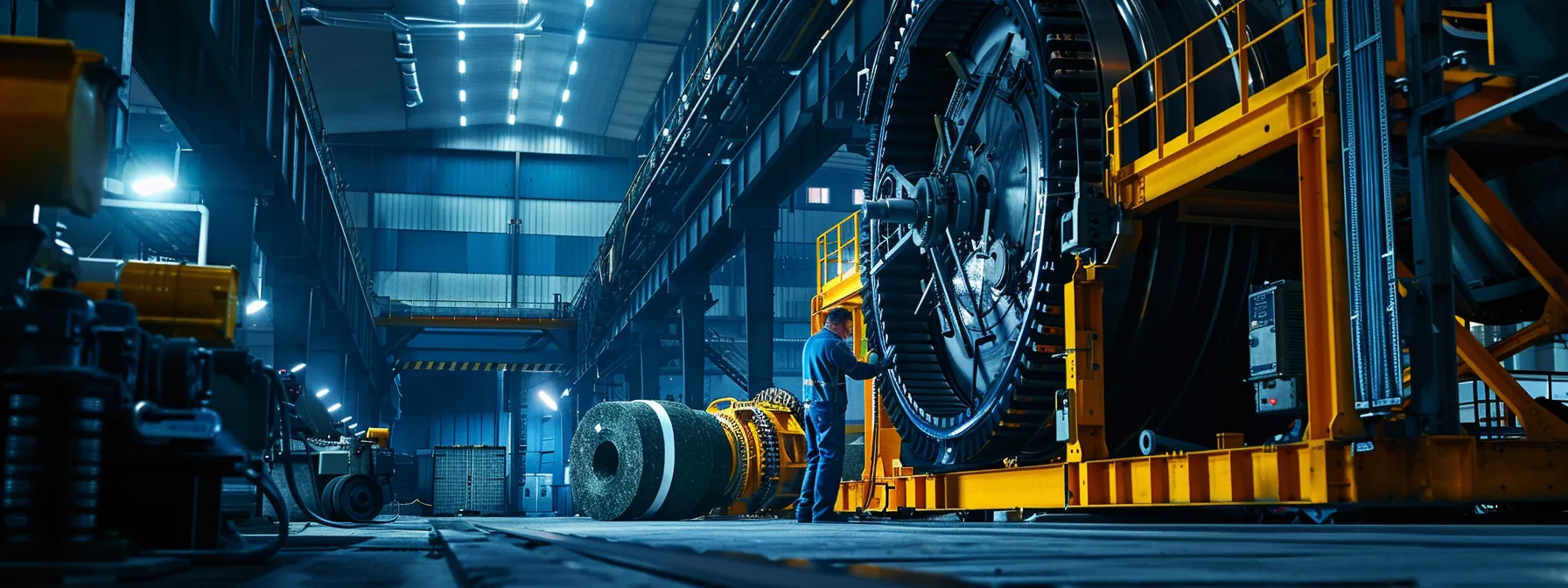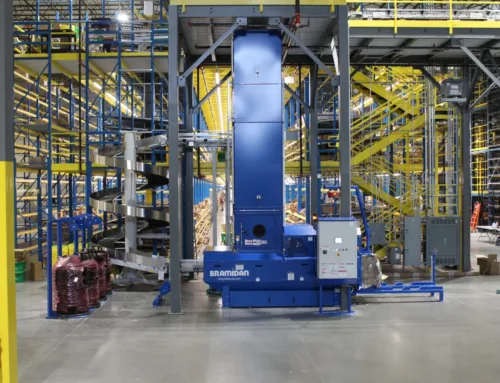
Are your warehouse balers experiencing frequent breakdowns? You’re not alone—many businesses face maintenance issues that can lead to costly downtime. In this article, we’ll explore the top five maintenance challenges warehouse balers encounter, including hydraulic system failures and electrical component malfunctions. By understanding these common problems and their solutions, you will be better equipped to keep your operations running smoothly and protect your investment. Engage with this content to identify and resolve these issues effectively, ensuring a more productive work environment.
Hydraulic System Failures Disrupting Baler Functionality

Hydraulic system failures can severely disrupt baler functionality, impacting efficiency and safety in your warehouse operations. You will learn how to identify leaks in hydraulic hoses and fittings, address low hydraulic pressure issues, and manage contaminated hydraulic fluid problems. Additionally, you will troubleshoot cylinder malfunctions and recognize signs of pump wear or failure to maintain optimal safety and performance standards.
Identifying Leaks in Hydraulic Hoses and Fittings
Identifying leaks in hydraulic hoses and fittings is crucial for maintaining your baler‘s functionality and preventing costly downtime. Regularly inspecting these components ensures the density of hydraulic fluid is consistent, which is essential for optimal energy efficiency. If you notice signs of metal shavings or fluid pooling, these are clear indicators of potential leaks, signaling the need for immediate attention to enhance the sustainability of your operations.
Addressing Low Hydraulic Pressure Issues
To address low hydraulic pressure issues in your baler, you should first check for any leaks in the hydraulic lines or connections, as even small leaks can significantly reduce pressure. Inspecting the hydraulic fluid level is essential; if it’s low, refill it to ensure optimal machine performance. Additionally, consider examining the electrical wiring associated with the hydraulic system and the condition of components like the pump and filters, as wear can impede pressure and affect your baling wire or strap operations.
Managing Contaminated Hydraulic Fluid Problems
Managing contaminated hydraulic fluid is essential for maintaining the efficiency of your baler‘s hydraulic system. Contaminants like scrap metal or dirt can cause overheating, leading to leaks and reduced performance. Following a standard operating procedure for regular fluid checks and changes will help ensure that your baler operates smoothly and minimizes the risk of costly disruptions.
Troubleshooting Cylinder Malfunctions in Balers
Troubleshooting cylinder malfunctions in balers requires a methodical approach to ensure smooth operation. First, examine the cylinders for signs of hydraulic fluid leaks that can lead to decreased performance. Pay special attention to the seals and connections, as wear on these components can impact the baler’s ability to effectively compact waste materials, especially plastic, on the warehouse floor in retail environments.
Recognizing Pump Wear or Failure Signs
Recognizing pump wear or failure in your baler is critical to preventing emergency hazards in your warehouse. You should be vigilant for unusual noises or vibrations during operation, as these signs often indicate that the pump is struggling to maintain pressure. Additionally, monitor for slow or ineffective compaction of cardboard; this could signify underlying pump issues that, if unaddressed, may disrupt your conveyor system and hinder your zero waste initiatives.
The baler‘s struggle with hydraulic failures is just the start. Next, the glint of electrical faults adds to the mounting chaos, halting operations and demanding attention.
Electrical Component Malfunctions Causing Downtime

Diagnosing faulty switches and control buttons is essential to ensure your baler operates without interruption. You’ll learn how to resolve sensor errors that affect baler cycles, manage motor overloads and failures, and address wiring damage or loose connections. Additionally, you will explore managing issues with programmable logic controllers (PLCs) to enhance your workflow, protect equipment, and support revenue generation.
Diagnosing Faulty Switches and Control Buttons
Diagnosing faulty switches and control buttons is vital for maintaining productivity in your baler operations, especially in processes involving packaging and shrink wrap. Start by checking for signs of wear or damage on these components, as friction can lead to poor functionality. Remember, even small issues in these electrical components can significantly affect the performance of heavy equipment, causing delays in the handling of materials like plastic wrap.
Resolving Sensor Errors Affecting Baler Cycles
To resolve sensor errors affecting baler cycles, you should start by performing a thorough inspection of all sensors connected to your compactor. Check for signs of wear and tear or dirt accumulation that could impair their functionality; routine cleaning can often yield impressive results. Maintaining proper sensor operation is not just about efficiency; it’s also an essential aspect of compliance with Occupational Safety and Health Administration regulations, ensuring that your recycling processes remain safe and effective for all employees involved.
Dealing With Motor Overload and Failure
Dealing with motor overload and failure in your baler begins with assessing the power supply and ensuring that it meets the operational needs of the equipment. Accumulated debris around the motor can obstruct airflow and lead to overheating, reducing productivity. Troubleshooting this issue involves checking for blockages and monitoring fluid levels in the hydraulic system, as low fluid can exacerbate motor strain and ultimately contribute to failure.
Addressing Wiring Damage or Loose Connections
Addressing wiring damage or loose connections in your baler is essential for maintaining operational efficiency and ensuring workplace safety. Over time, dust accumulation can lead to exposed wires, increasing the risk of electrical failures and potential injury. Regularly inspecting wiring and securing connections can prevent disruptions in logistics, allowing your operations to flow smoothly while safeguarding the health of your team. Always utilize personal protective equipment when conducting these inspections to further enhance safety protocols in your warehouse.
Managing Issues With Programmable Logic Controllers (PLCs)
Managing issues with Programmable Logic Controllers (PLCs) is essential for smooth baler operations in a distribution center. You should regularly monitor the system for irregular sounds or unexpected behaviors that may indicate faults within the PLC. Proper maintenance practices, such as recalibrating sensor inputs and updating software, can help prevent downtime and ensure your baler operates efficiently, allowing for seamless material handling and processing.
Downtime from electrical component malfunctions isn’t the only risk to productivity. Structural wear and tear can quietly undermine the integrity of your baler, leading to more significant issues ahead.
Structural Wear and Tear Affecting Baler Integrity

Inspecting your baler frame for cracks or damage is essential to maintaining structural integrity. Checking ram guides and tracks for alignment issues ensures smooth operation, while assessing wear on the chamber door and latches prevents safety hazards. Monitoring platen surfaces for uneven wear and addressing corrosion on baler components further enhances performance and longevity. Each of these aspects plays a vital role in optimizing your baler‘s functionality.
Inspecting the Baler Frame for Cracks or Damage
Inspecting the baler frame for cracks or damage is essential for ensuring the overall integrity and safety of your warehouse operations. Regular checks should focus on welds and stress points, as these areas are prone to wear due to constant heavy usage. If you identify any cracks, addressing them immediately can prevent more severe structural failures and potential downtime, ultimately supporting the efficiency of your recycling processes.
Checking Ram Guides and Tracks for Alignment Issues
Checking ram guides and tracks for alignment issues is essential to ensure your baler‘s effective operation. Misalignment can cause uneven wear, leading to premature breakdowns and costly downtime. Regular inspections allow you to identify and correct alignment problems early, which can enhance the overall performance of your baler and extend its lifespan, ultimately ensuring a smoother workflow in your warehouse.
Assessing Wear on the Chamber Door and Latches
Assessing wear on the chamber door and latches is essential for maintaining your baler‘s overall functionality and safety. Regular inspections should focus on any signs of deterioration, such as misalignment or excessive wear that can lead to operational failures. Taking prompt action to repair or replace worn components not only ensures efficient compacting of materials but also helps uphold safety standards in your warehouse operations.
Monitoring Platen Surfaces for Uneven Wear
Monitoring platen surfaces for uneven wear is vital for maintaining your baler‘s efficiency and overall performance. Regularly inspecting these surfaces helps identify wear patterns that could indicate underlying issues, such as misalignment or inadequate lubrication. By addressing these concerns early, you prevent potential failures and extend the service life of your baler, ultimately ensuring seamless operations in your warehouse.
Addressing Corrosion on Baler Components
Addressing corrosion on baler components is critical to maintaining the integrity and functionality of your warehouse operations. Regular inspections should target vulnerable areas, including metal surfaces and joints, where rust may develop. Removing any visible corrosion promptly and applying protective coatings can help extend the life of your baler, ensuring continuous optimal performance while minimizing the risk of operational disruptions.
Wear and tear weakened the baler, revealing cracks in its integrity. As the machine faltered, material jams began to pile up, stalling operations and inviting a deeper problem.
Frequent Material Jams Hindering Operations

Recognizing the causes of feed chute blockages is vital to preventing frequent material jams in your baler. Clearing obstructions within the baling chamber and adjusting feeding practices are essential steps to maintain efficiency. Inspecting shear blades for dullness or damage also plays a critical role in resolution. Furthermore, understanding how improper material preparation leads to jams can enhance your overall operations.
Recognizing Causes of Feed Chute Blockages
Recognizing the causes of feed chute blockages is essential for maintaining efficiency in your baler operations. Common factors include using improperly sized materials, which can lead to jamming as they fail to fit smoothly through the chute. Additionally, monitoring moisture levels in the materials is crucial, as excessive moisture can cause materials to clump together, further aggravating blockages and hindering your workflow.
Clearing Obstructions Within the Baling Chamber
Clearing obstructions within the baling chamber is essential for minimizing downtime and ensuring efficient operations. You can start by carefully inspecting the chamber for items causing blockages, such as oversized materials or debris. Regular cleaning and maintenance will help you swiftly resolve these issues, ultimately improving your baler‘s performance and reducing the risk of material jams in your daily operations.
Adjusting Material Feeding Practices to Prevent Jams
Adjusting material feeding practices is essential for preventing jams in your baler. You should ensure that materials are correctly sized and free of excess moisture before feeding them into the baling chamber. Implementing a routine for inspecting materials can help identify potential issues early, allowing you to maintain a smoother workflow and enhance overall productivity in your operations.
Inspecting Shear Blades for Dullness or Damage
Inspecting shear blades for dullness or damage is essential for preventing material jams in your baler operations. Over time, blades can wear out, leading to ineffective cutting and increased friction, which may cause blockages in the baling chamber. To maintain optimal performance, regularly check the sharpness of the blades and replace them as necessary; this simple maintenance task ensures efficient processing of materials and enhances the longevity of your baler.
Understanding How Improper Material Preparation Leads to Jams
Improper material preparation often leads to frequent jams in your baler, which can disrupt operations and reduce efficiency. For instance, feeding bulky or improperly sized materials can cause blockages, preventing the baler from functioning smoothly. By ensuring that materials are correctly sized and dry before introduction into the baling chamber, you can significantly minimize the risk of jams and maintain seamless productivity in your warehouse.
Material jams halted progress, leaving operators frustrated and idle. Yet, lurking behind the machines, a more pressing concern emerged—safety features faltered, threatening the protection of those who operated them.
Safety Feature Breakdowns Compromising Operator Protection

Your warehouse baler‘s safety features are crucial for ensuring operator protection and preventing accidents. Begin by testing the emergency stop button functionality, verifying interlock switches on doors and guards, and checking the operation of light curtains or safety gates. It’s also essential to ensure warning labels and signals are intact and to address any failures in automatic shutdown mechanisms, safeguarding your operations effectively.
Testing Emergency Stop Button Functionality
Testing the emergency stop button functionality is crucial to ensure operator safety in your warehouse baler operations. You should routinely check that the button engages smoothly and brings the machine to a complete stop when pressed. Performing this simple audit regularly not only prevents potential accidents but also maintains compliance with safety regulations, ultimately fostering a safer working environment for your team.
Verifying Interlock Switches on Doors and Guards
Verifying interlock switches on doors and guards is essential for ensuring the safety of your warehouse baler operations. These switches should engage properly when doors are opened to prevent accidental activation of the baler, which can lead to serious injuries. Conduct regular inspections to confirm that the switches are functioning correctly, and replace any malfunctioning components immediately to maintain a secure working environment for your team.
Checking Light Curtains or Safety Gates Operation
Checking the operation of light curtains or safety gates is vital for ensuring operator protection in your warehouse baler operations. You should regularly test these safety devices to confirm they activate correctly, preventing the baler from operating when someone enters a designated safety zone. Consistent verification of these safety features not only enhances safety compliance but also fosters a workplace where your team can operate with confidence, knowing effective protective measures are in place.
Ensuring Warning Labels and Signals Are Intact
Ensuring warning labels and signals are intact is vital for maintaining safety in your warehouse operations. Regularly inspect labels on and around your baler to confirm they are legible and correctly positioned, as clear warnings help prevent accidents and guide operators in safe practices. If you notice any faded or damaged labels, replace them promptly to reinforce safety protocols and protect your team while they handle materials.
Addressing Failures in Automatic Shutdown Mechanisms
Addressing failures in automatic shutdown mechanisms is essential for ensuring operator safety during baler operations. Regularly test these systems to confirm they engage properly during emergencies, effectively halting the baler to prevent accidents. If you notice any inconsistencies in the operation, prioritize repairs immediately to maintain a safe working environment and comply with safety regulations, ultimately protecting your team and enhancing operational reliability.
To keep the baler running smoothly, attention to its care is key. Discover how simple maintenance steps can prevent costly issues and ensure operator safety.
Preventative Upkeep Strategies to Minimize Baler Problems

Establishing a regular baler inspection schedule is essential for catching issues early. Proper lubrication practices will help maintain smooth operations, while training operators on correct baler usage procedures minimizes operational errors. Keeping detailed maintenance logs ensures that all maintenance activities are documented, and scheduling professional servicing for complex repairs keeps your baler in optimal condition. These strategies collectively enhance performance and reliability in your warehouse.
Establishing a Regular Baler Inspection Schedule
Establishing a regular baler inspection schedule is vital for preemptively identifying and resolving potential issues that could disrupt operations. By conducting these inspections consistently, you can catch minor problems before they escalate into costly repairs or downtime. A well-documented inspection routine not only enhances your baler‘s efficiency but also ensures compliance with safety regulations, protecting your employees and your investment in equipment.
Implementing Proper Lubrication Practices
Implementing proper lubrication practices is essential to ensure the smooth operation of your warehouse baler. Regularly check lubrication points and apply the appropriate lubricant as specified by the manufacturer to prevent excessive wear on moving parts. By maintaining a routine lubrication schedule, you not only enhance the performance and longevity of your baler but also reduce the risk of unexpected downtime caused by mechanical failures.
Training Operators on Correct Baler Usage Procedures
Training your operators on correct baler usage procedures is essential for minimizing maintenance issues and ensuring optimal performance. Providing thorough training sessions that cover operational guidelines, safety protocols, and troubleshooting techniques equips your team with the necessary skills to handle the baler effectively. By addressing common challenges, such as improper feeding practices or overlooking safety features, you can enhance productivity and reduce the risk of costly downtime in your warehouse operations.
Keeping Detailed Maintenance Logs for Warehouse Balers
Keeping detailed maintenance logs for your warehouse balers is essential for tracking performance and identifying recurrent issues. By documenting each maintenance activity, including inspections, repairs, and any irregularities, you create a valuable resource that enhances your decision-making. This proactive approach not only extends the lifespan of your baler but also minimizes unexpected downtime, allowing you to maintain efficiency in your operations.
Scheduling Professional Servicing for Complex Repairs
Scheduling professional servicing for complex repairs is essential for maintaining your baler‘s optimal performance. As an operator, you may encounter issues that go beyond basic troubleshooting, such as hydraulic system failures or significant electrical malfunctions. Engaging experts ensures these problems are addressed correctly, minimizes future risks, and ultimately enhances productivity within your warehouse operations.
Conclusion
Understanding the top maintenance issues warehouse balers encounter is vital for ensuring operational efficiency and safety. By addressing hydraulic system failures, electrical malfunctions, structural wear, frequent material jams, and safety feature breakdowns, you can minimize downtime and enhance productivity. Implementing proactive maintenance strategies and conducting regular inspections empower you to resolve problems before they escalate. Prioritize these insights to protect your investment and maintain a seamless workflow in your warehouse operations.
Share This Story, Choose Your Platform!
Get In Touch
Phone: (847) 722-6942
Email: sales@end2endlogix.com
Web: end2endlogix.com


